Tempe, AZ Pollen and Allergy Report for Summer 2023
Pollen Allergy Trends in Tempe, AZ
When is pollen lowest in Tempe, AZ?

February
Lowest month total PPM
Avg. PPM
When is pollen highest in Tempe, AZ?

March
Highest month total PPM
Avg. PPM
How does pollen in Tempe, AZ compare to Arizona?
Tempe has a lower average PPM than the state of Arizona.
Tempe yearly avg PPM:
Arizona yearly avg PPM:
How does pollen in Tempe, AZ compare to the USA?
Tempe has a lower average PPM than the USA.
Tempe yearly avg PPM:
USA yearly avg PPM:
Is pollen worse this year in Tempe, AZ?
Spring 2023 was better than spring 2022.
Spring 2023 PPM:
Spring 2022 PPM:
Average PPM in Tempe, AZ
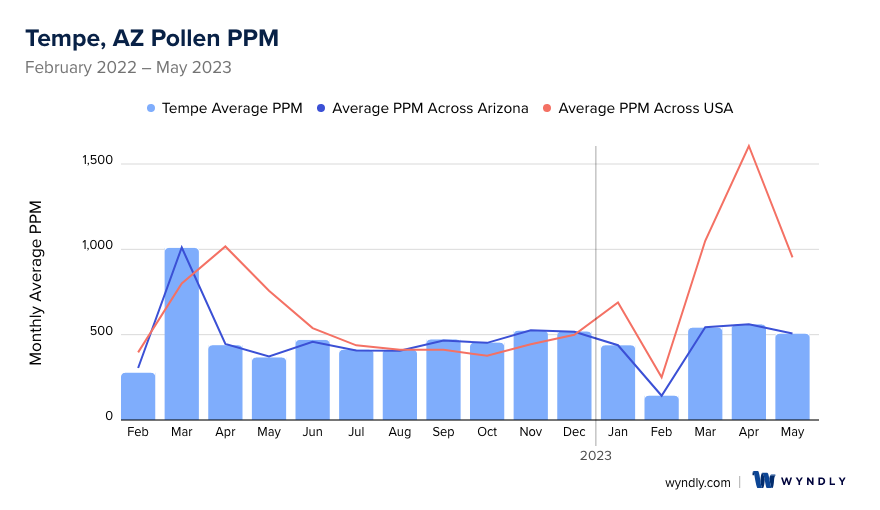
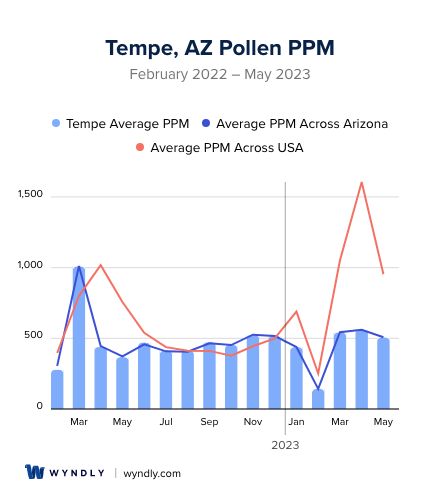
Tempe, AZ Pollen and Allergy Breakdown by Month
Grass
When is grass pollen highest in Tempe, AZ?
August has the highest grass pollen in Tempe, AZ with an average PPM of
When is grass pollen lowest in Tempe, AZ?
December has the lowest grass pollen in Tempe, AZ with an average PPM of
Tree
When is tree pollen highest in Tempe, AZ?
March has the highest tree pollen in Tempe, AZ with an average PPM of
When is tree pollen lowest in Tempe, AZ?
July has the lowest tree pollen in Tempe, AZ with an average PPM of
Weed
When is weed pollen highest in Tempe, AZ?
December has the highest weed pollen in Tempe, AZ with an average PPM of
When is weed pollen lowest in Tempe, AZ?
February has the lowest weed pollen in Tempe, AZ with an average PPM of
Tempe, AZ Pollen Monthly Breakdown by Pollen Type
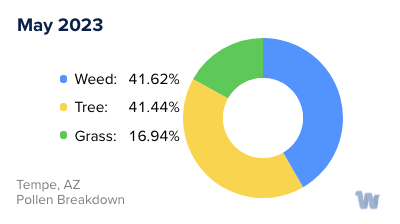
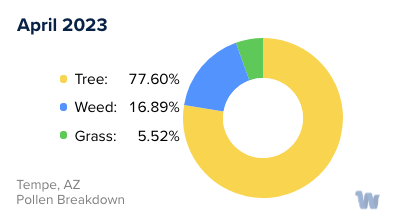
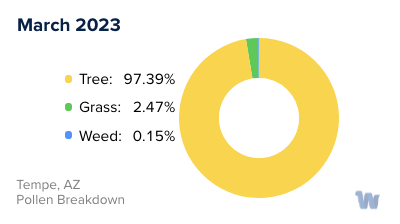
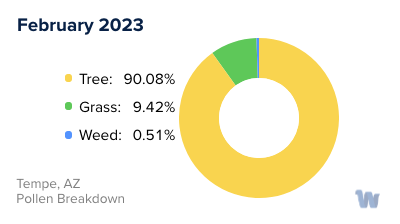
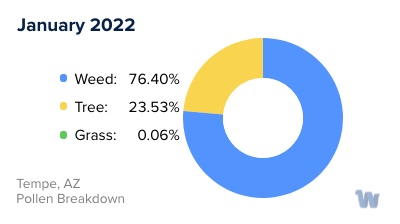
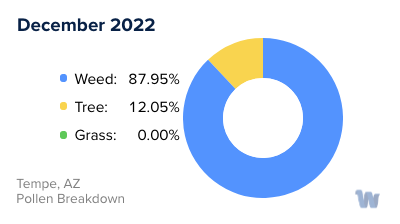
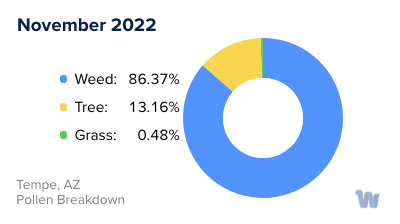
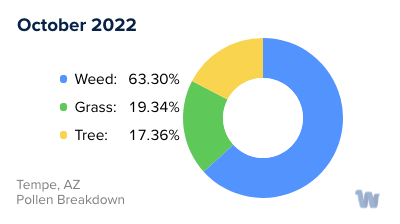
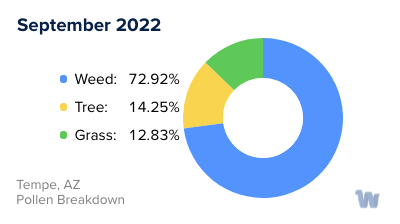
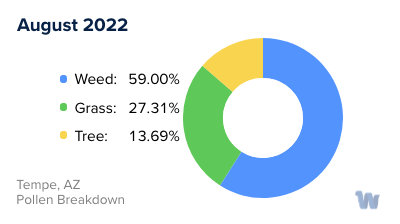
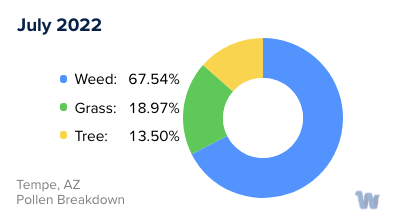
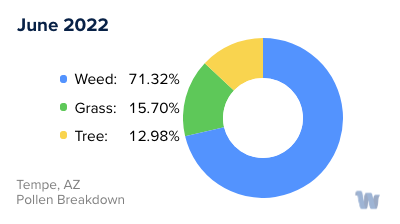
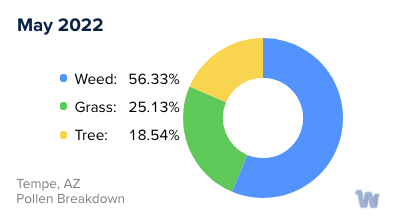
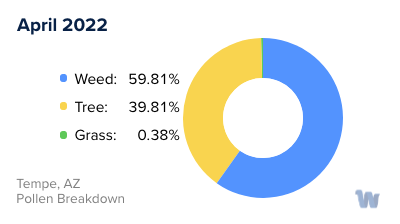
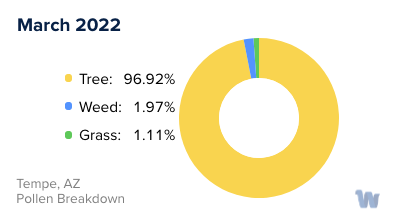
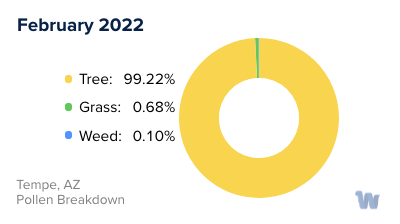
Pollen and Hay Fever in Tempe, AZ
In the vibrant city of Tempe, Arizona, the beauty of nature can sometimes come with a downside for those who are sensitive to pollen. Pollen allergies, often referred to as hay fever, can make certain times of the year challenging for residents and visitors alike.
Pollen is a fine powder produced by plants for fertilization. In Tempe, the types of pollen that commonly trigger allergies are from trees, grasses, and weeds. The desert climate of Tempe allows for a unique blend of vegetation, and this, in turn, influences the pollen in the air.
Tree pollen is usually the first to make its appearance in the year. From late winter to early spring, trees such as Mesquite, Palo Verde, and Olive begin releasing pollen. This can result in sneezing, a runny nose, and itchy eyes for those who are allergic.
As spring transitions into summer, grass pollen takes the stage. Bermuda grass is especially common in Tempe and is known for producing pollen that can irritate sensitive individuals. This is the time when many people enjoy outdoor activities, so it’s essential to be aware of the grass pollen in the air.
Finally, as summer fades into fall, weed pollen becomes more prevalent. In Tempe, one of the primary culprits is the Ragweed plant. Ragweed pollen is notorious for causing hay fever symptoms and can be present in the air from late summer to the first frost.
It is important to note that in Tempe, the pollen season can be extended due to the warm climate. This means that people with pollen allergies might experience symptoms for a longer duration compared to those living in cooler areas. Being knowledgeable about the types of pollen and the seasons in which they are prevalent can help residents of Tempe plan accordingly and enjoy the beauty of their city with minimal discomfort.


